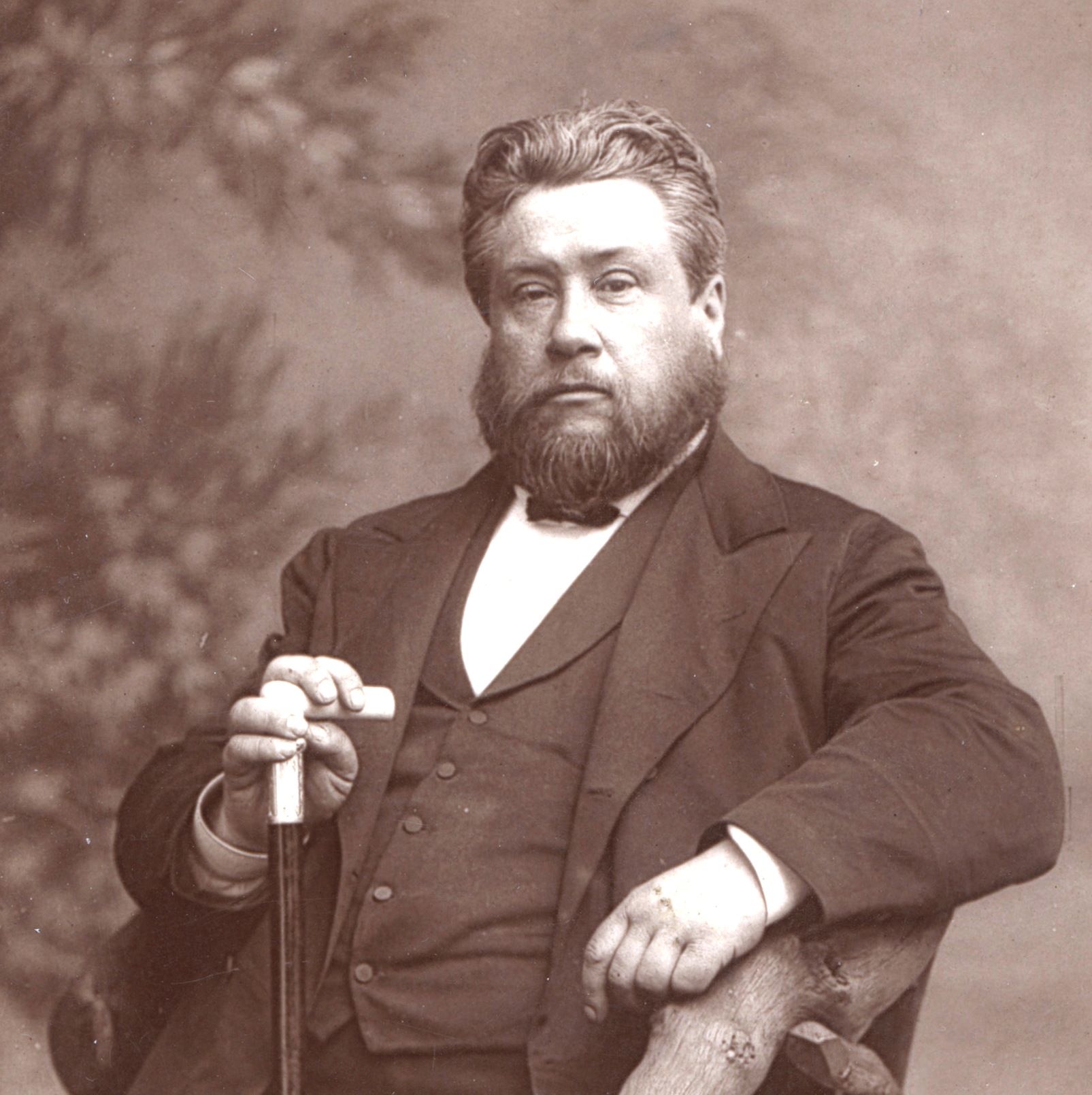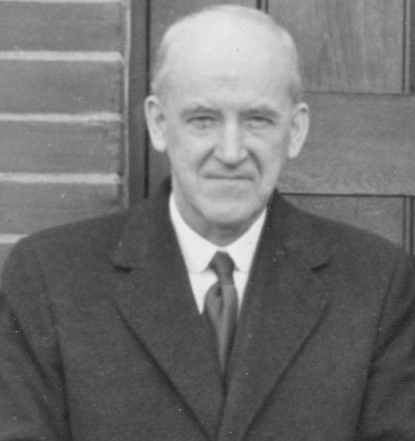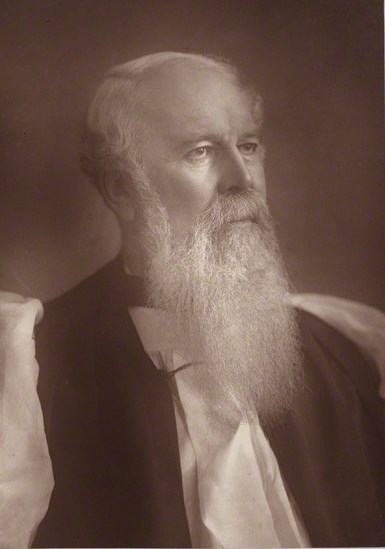To the mere passer-by, this sacred plot in the City Road,
London, is just an ordinary disused burying ground. To
the tired factory girl and weary mechanic it is a place in
which to rest during the dinner hour. To the builder it
presents itself as a splendid site for factories and offices.
To crowds of people it is a short cut from the busy City Road to the quieter Bunhill Row. To popish clerics it is
almost as a plague spot that should be carefully avoided.
To a lover of liberty of conscience, of freedom of
thought, of an open Bible and of spiritual religion, it is,
however, hallowed ground, for beneath its turf there are
resting thousands of brave men and women who counted
not their lives dear unto them, but who "contended
earnestly for the faith once delivered to the saints."
The principles of Scriptural Dissent are here magnified,
whilst thoughts of cruel and wicked persecutions by
spiritually ignorant clerics, magistrates, and evil princes
crowd into the mind. Here are buried some 120,000
persons. Many of these died in poverty and distress, some
even within prison walls, whilst had they been willing to
comply with the regulations and to accept blindly the
teachings of such popish bishops as Laud, many would
have occupied positions of national distinction.
The following account is chiefly compiled from two
publications of the City Corporation, viz., "Bunhill
Fields Burial Ground; Proceedings in reference to its
Preservation," and the Official Guide. The former,
which contains very important correspondence between
the City Fathers and the Ecclesiastical Commissioners,
was pubhshed in 1867, and is now somewhat rare; the
latter can still be obtained of the keepers at the Grounds.
The history here given is of great importance, and there
is true cause for thankfulness that the Ecclesiastical
Commissioners, into whose hands the valuable Finsbury
estate, of which Bunhill Fields is a portion, fell in 1867,
had a wealthy and powerful body to contend against.
Amongst the City Fathers during the critical period
there were Sir Charles Reed and others who boldly
championed the cause of righteousness and justice.
In the old days, at the original entrance, there was a
stone with the following inscription: "This churchyard
was enclosed with a brick wall, at the sole charge of
the City of London, in the Mayoralty of Sir John
Lawrence, Kt., A.D. 1665; and afterwards the gates
hereof were built and finished in the Mayoralty of Sir
Thomas Bludworth, Kt., A.D. 1666." Strangely enough
it has been completely lost.
This takes us back to the days of the Great Plague and
Fire of London, although it is probable that centuries
before there was a Saxon burying place at Bon-hill or
Bone-hill Fields.
The whole district was swampy, and at various spots
archers, apprentices, and the soldiers practised with their
bows, staves, and other weapons. From this place many
had in the past gone to fight the French at Cressy,
Poitiers, and other famous battles; and here the City
train bands brought themselves to a state of proficiency
by zealously and constantly engaging in their more
peaceful combats.
The land itself was originally part of a great church
property, but in the fifteenth century the Corporation
took it over at a yearly rent of twenty shillings. For
this sum the Lord Mayor was granted "for himself and
for his successors all his right and claim" to the property,
which was considered to be a grant of the land in
perpetuity. There must have been, however, some flaw
in the provisions, as in 1653 the Corporation obtained a
lease for ninety years at a rental of £29 13s. 4d.
In 1561 a most terrible thunderstorm and tempest
burst over London, and in every quarter houses were
wrecked, whilst the lightning struck and seriously
damaged St. Paul's Cathedral. Indeed a portion of the Cathedral was actually destroyed whilst the terrified
citizens for the most part gazed helplessly on. To repair
the noble structure and to re-lead the roof was a great
undertaking, towards which the Corporation provided
about twenty tons of lead. In return for this two
further leases of seventy years each were granted, which
gave the City possession for 215 years, and this was
naturally considered to be very little short of a freehold.
During the Commonwealth, when the church lands
were sold, the Corporation bought the Finsbury estate
and thus became Lords of the manor. As such they
paid no rents, but when some ten years later the Stuart
family in the person of Charles II regained the throne
of England, all the properties returned to the Church. It
was quite in keeping with the character of the new king
and of the ecclesiastical authorities that there was no
repayment of the purchase money, so the City suffered the
loss of their money and property. The land was now put
to some use in order to produce income, and De Foe is of
opinion that the Great Plague Pit was at or near this
spot. The City burying places were soon filled, for
persons were dying at the rate of eight or ten thousand
every week.
It is stated in "Maitland's Survey" (1739) concerning
this land that "Part whereof at present denominated
Tindal's or the Dissenters' burial-ground, was by the
Mayor and Corporation of London, in the year 1665, set
apart and consecrated as a common cemetery for the
interment of such corpses as could not have room in the
burial-grounds in the dreadful year of the pestilence.
However, it not being made use of on that occasion,
the said Tindal took a lease thereof, and converted it
into a burial-ground."
The ground is marked for a time on the maps by the
name of Tindal instead of the Bon-hill Fields. As the
books of the City were destroyed by fire there is no
record of it earlier than 1698, but a stone was found on
which was the name of Debora Warr, the date being
November 10th, 1623. It is thought probable that this
is the date of the woman's death, but that the body was
re-interred. There was another, however, of "Joannes Seaman, natus 6 Feb. 1665, ob Jul. 23, 1665," and this
is most likely to be the more ancient. In turn, Bunhill
Fields was in the possession of a James Browne, and a
certain Elizabeth Fetherstonhaugh, but about 1741 the
Corporation took sole charge once again, and by this time
the revenue was very considerable.
Special attention was drawn to the Finsbury Estate in
the Parliament of 1766, and there were proposals to
make some use of the lands "now the resort of idle and
disorderly persons." These arrangements were far reaching,
but in all the plans it is clearly shown that the
burying-ground was to remain untouched. Merchants'
houses and homes for professional men were to be erected,
and the City authorities entered without delay into
negotiations with Prebendary Wilson. The official committee
reported to the Common Council that they had
"agreed with the Prebendary to join in an application to
Parliament for an Act to enable the Prebendary and his
successors to grant a lease to the City of the Prebendal
Estate, from Christmas last, for a term of ninety-nine
years, renewable at the expiration of seventy -three years
by adding fourteen years, to make up a term of forty
years, and afterwards every fourteen years in like manner
for ever." In some extraordinary way a clause to this
effect (although in the Bill) was omitted from the Act,
but it has not been discovered how this unfortunate
accident occurred. It is obvious that the renewal of the
lease every fourteen years for ever was to be a vital point
in the agreement, but at the appointed time no renewal
did take place or was ever allowed to do so. The result
ultimately was that an immense and most valuable property
fell into the hands of the Ecclesiastical Commissioners,
and thus from henceforth the enormous income
was to be used for Church of England purposes. The spirit
of the voluntary agreement was absolutely ignored by
the clerical party, and the Corporation had to suffer this
second great loss by the absolute letter of the Act being
maintained.
There is ample evidence that in addition to the City
authorities, the public and also the church party believed
that the property was to be held in public trust practically
Bunhill Fields, 5
till the end of time, and that because of this there
was a conviction that the stones and resting-places of
the noble dead in Bunhill Fields would never be disturbed.
Any other supposition is impossible, for certainly
Dissenters would not have purchased graves and erected
monuments if these afterwards were to be placed at the
mercy of a priestly caste. When it became known to
the public that Bunhill had changed hands, a Committee
made application that the burial-ground should be held
sacred for ever. Considering that hitherto this portion of
the estate had been always omitted for valuation purposes
the reply of the Commissioners was very strange. They
stated that the ground was considered to be worth £100,000 - presumably for building purposes - but that
they were willing under the circumstances to receive £10,000 by way of compensation. This led to a memorial
being presented to the Corporation, at which ah appeal
was made that authority should be obtained from Parliament
to prevent secular use being made of this sacred
spot.
On the 16th November, 1865, at the Court of Common
Council, the following special resolution was passed:
—
"Resolved unanimously - That this Court learns with regret
that in the communications with the Ecclesiastical Commissioners,
the Committee have not found any disposition to
concur in an arrangement for the preservation of the Bunhill
Fields' Burial Ground, except upon the terms of sale and purchase
"That having regard to the antiquity of this spot as a place
of extramural sepulture, that it has been held by this Corporation
for more than five hundred years, that it has been set
apart and used for centuries as a place of interment ; that a
public pledge has been given by the conjoint authorization of
the Ecclesiastical authorities and the Corporation - 'That the
ground should at all times hereafter remain for the purposes of
burials only,' and that up to the year 1832, upon these conditions
and assurances, vaults have been sold: this Court
protests against this ground or any part thereof being applied
to secular uses. That, considering the high historic interest
attaching to the Bunhill Fields Burial Ground, in consequence
of the interment of so many distinguished and honoured men
of all creeds and parties, this Court is willing to accept
6 Bunhill Fields,
the care and preservation of the ground on behalf of the
public, and to assist in promoting any well-advised scheme for
securing against molestation and disturbance the final resting place
of so many thousands of their fellow-citizens.
"Ordered: That a copy of the foregoing Kesolutions be
transmitted to the Ecclesiastical Commissioners."
In a remarkably short time a Bill was prepared and
became an Act, one of the clauses being:— "The Burial
Ground shall from time to time and at all times ... be held, used, and enjoyed, as an open space, accessible
to the public at such times and under such regulations
as the Corporation shall from time to time think proper
and expedient ... and no house or other building,
whether for the purpose of residence or trade, or for any
other purpose, shall, from henceforth and for ever hereafter,
be built or erected upon the burial ground or any
part thereof."
Immediately after the Act was obtained a special
Committee was appointed by the City authorities to
make alterations and to restore and improve the ground
generally, the place being opened to the public in October,
1869, after two years labour. A statement was made to
the Corporation by the Chairman of the Committee in
the following words:
—
"In the presence of representatives of families whose dead
were buried here, and of the delegates of churches and societies
whose pastors and founders rest in this ground, I desire to say
that in all the reparations and alterations carried on within
this enclosure, not a fragment of stone has been taken away,
nor has any portion of the soil been removed. Tombs have
been raised from beneath the ground, stones have been set
straight, illegible inscriptions have been deciphered and re-cut,
hundreds of decayed tombs have been restored, paths have
been laid and avenues planted : and in all the sacred rights of
sepulture scrupulously respected. An accurate copy of all the
principal inscriptions exists ; a complete register of all interments
is preserved ; an exact plan of the entire ground has
been taken ; and it is now hoped that the Corporation of London
having voluntarily done so much, the families owning
graves here may come forward to do the rest. Within a few
weeks the Committee will have discharged a trust readily
undertaken in the public interest. They have considered themselves as fulfilling a sacred duty while renewing to posterity
the emblems of the zeal and the suffering of their forefathers,
and thereby, in the language of one buried here,
'trimming, as it were, the beacon-light left to warn future
generations to defend their religion, even unto their blood.' It
only remains that I should ask your lordship (The Right Honourable the Lord Mayor, Sir James Clarke Lawrence, Bart., M.P.) to declare this
ground open, under the conditions of the Act of Parliament
which gives to the people this their prized and rightful inheritance."
The appeal that "the families owning graves here may
come forward and do the rest" met with some response,
and certain monuments were erected by public subscription.
It is full time, however, that more interest and love
should be shown for the tombs of such noble men and
women. The decaying hand of time is to be seen upon
almost every stone; some are broken in two, others
have sunk into the ground, and many more are now
practically unreadable. Unless something is done it will
be quite impossible to locate the stones of some of the
most famous and godly persons, and this will be a disgrace
to the public in general, but to Dissenters in
particular.
At different times since the opening various alterations
have been made. There is now a new entrance and a
path running through from the City Eoad to Bunhill
Eow, but the old gateway may still be seen with its row
of fierce, cruel-looking spikes which were placed there to
prevent the body-snatchers doing their gruesome work.
Trees have also been planted, especially the planes with
their strange " moulting " trunks, and the ground has
been re-turfed, flowers planted and seats provided. In
addition to the official keeper there is also a gardener
employed, so that for the most part this " God's Acre" is
in a fair condition. But one look at the stones in their
decaying state is a sad, sad sight, and the expense of preserving
the main ones would be but a small matter to the
great Dissenting bodies, whilst in addition, surely there
are many others who love the honour of these men and
the truth of God sufficiently to subscribe in order that the last resting-places of some of England's noblest children
may not sink entirely into obscurity.
The writer of the Official Guide makes a most moving
appeal in the following words: "Shall no friendly hand
clear away those dank weeds which hide the lowly stones?
Shall none appear to cleanse the soiled and weather-worn
slab, so that its record may be traced? Shall none be
found to lift up the headstone fallen slantwise to the
earth, or to renew the masonry of the altar tombs, lying
now in shapeless and pitiable ruin? Is there none to
chisel out the faded inscription, and with pious hand to
grave still more deeply the time-honoured memorials?
Nonconformists! is there no 'Old Mortality ' amongst
you, who, out of love for these sainted ones and for their
Lord and Master, would live awhile amongst the tombs,
and make it impossible that the names of our illustrious
dead - confessors, historians, pastors, poets - and their
dying witness to His love, shauld evermore be hidden
from our view?"













No comments:
Post a Comment